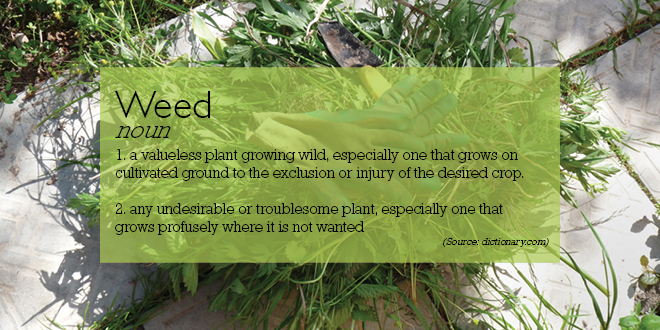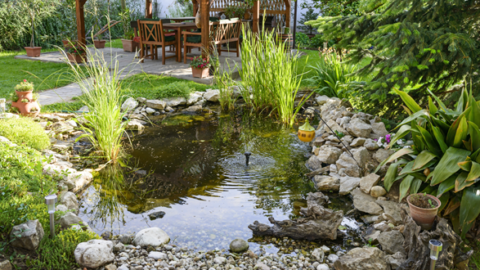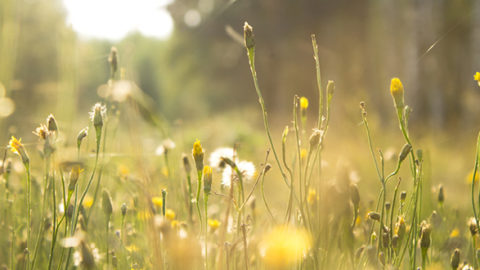Waging War on Weeds

One year’s seed is seven year’s weed
[box type=”shadow” align=”” class=”” width=”400″]Weed
noun
1. a valueless plant growing wild, especially one that grows on cultivated ground to the exclusion or injury of the desired crop.
2. any undesirable or troublesome plant, especially one that grows profusely where it is not wanted
(Source: dictionary.com) [/box]
Though these are the dictionary definitions of a weed, ask any gardener, and you will get a different answer about their definition of a weed, but all will agree that they are a menace!
In my garden, for instance, my Alchemilla Mollis, left unchecked, does indeed become a troublesome plant, especially when it overtakes and overshadows other plants in my beds. As can my wild geranium – but neither are traditionally classed as weeds! I occasionally, therefore, have to wage war on them to keep the peace in the beds!
On the other hand, both plants help with keeping other weeds at bay because of their spreading nature – the geranium, in particular, is also good ground cover.
But how do you deal with those other plants (weeds) that if left to their own devices will not only make your garden look untidy but may also be causing your other plants to suffer?
There’s no one-size-fits-all answer, unfortunately, but applying a multi-pronged attack will help: Weeds set seeds and multiply at an alarming rate unless they are dealt with promptly. The best way to do this if you are limited for time is to cut off its head before it has time to set seed.
Be vigilant before planting, buying plants from a nursery, or moving plants from around the garden, make sure you don’t have any small seedling weeds on the surface of the compost or soil when planting.
Failure to remove these tiny seedlings will multiply your weed problem in the coming weeks, months and years and will cause you no end of annoyance.
Bindweed, nettles or couch grass have far-reaching underground stems, docks and dandelions have very strong roots that are hard just to pull-out.
The only sure-fire way to get rid of all of these types of weed is to dig them out, which can be back-breaking work.
It’s far better, than opting to use a rotavator to turn the ground over.
This will only result in the roots being chopped up and flung far and wide to resettle and re-grow.
The hoe is still the gardener’s friend, keep it sharp and use on your plot regularly.
If you have a large weedy area, cover with a couple of layers of wool carpet – it will need to be placed face down on the weeds and left for 18 months so that the weeds will die from lack of light.
Unfortunately, the old gardener’s saying “One year’s seed is seven year’s weed” contains more than a grain of truth. So, unless you’re prepared to de-head, de-flower and de-root weeds, it’s probably best not to compost them; as you may find you could just be recycling them!
By Nikki Relffe-Arnold






